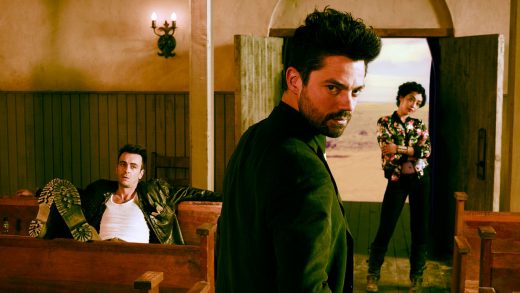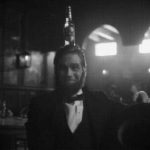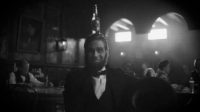How Seth Rogen And Evan Goldberg Got “Preacher,” Comics’ Most Profane Series, On AMC
People have been trying to make Preacher work on television or the movies since the first issues were published in 1995. The list of people who attempted to bring the profane, disturbing, thrilling, and hilarious series to screens reads like a timeline of filmmakers who were hot between the mid-90s and the late 00s. It includes folks like Kevin Smith, Tank Girl director Rachel Talalay, Daredevil director Mark Steven Johnson, The Whole Ten Yards director Howard Deutch, and Sam Mendes. But by 2009, the project was dead and buried—after HBO declared it “too dark and too violent and too controversial,” according to Johnson.
When you’re too dark, violent, and controversial for a network that had Ramsay Bolton commit infanticide-by-dog this season, you’re going to have a hard time making it to television. And it wasn’t just the darkness and violence—which also includes a whole lot of gleeful blasphemy—that made Preacher an unlikely crossover to television. There’s also the fact that the entire thing is a mess of genres, tones, and high-profile, high-stakes destruction. (At one point, Utah gets nuked; at another, a seven-foot-tall cowboy murders an entire French army in a single gunfight.) It costs the same amount of money to have 22 pages of explosions in a comic book as it does to have 22 pages of people sitting in a diner talking—but how the hell do you put something with the scope of Preacher on film?
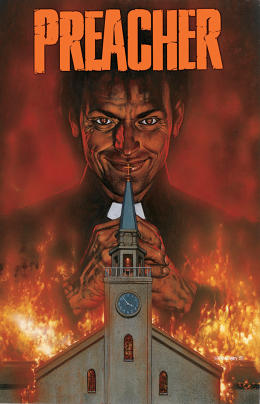
“I read the comics and I said, ‘There’s no way you can make this into a TV show,'” showrunner Sam Catlin recalls of his first meeting with series creators Seth Rogen and Evan Goldberg. “It’s just impossible. And they were like, ‘Nah, it’ll be great.’ So after a few weeks, I started to think about it, and we all sort of got our heads together, and it has been great.”
Preacher tells the story of Jesse Custer, a Texas preacher who finds himself imbued with the power of a supernatural force that manifests itself in “the Word of God”—the ability to issue commands that must be obeyed by whomever hears them. As Custer learns how to use this power, he finds himself embarking on a grand American adventure accompanied by his best friend, Cassidy—a hard-drinking Irish vampire—and his former flame, Tulip O’Hare, who carries a few dark secrets of her own. Along the way, they encounter a memorable cast of characters that includes a suicide survivor known as Arseface, a 19th-century gunfighter with a mad-on for the world called the Saint of Killers, and the mastermind of a murderous, millennia-long conspiracy, Herr Starr. It’s the brainchild of Irish comic book writer Garth Ennis and English artist Steve Dillon, who told the story of Custer, Cassidy, Tulip, and friends over the course of 66 issues (plus nine one-shots and miniseries) from 1995 to 2000. And it’s definitely not something that it’s easy to bring to television—so how did Catlin, Rogen, and Goldberg make it happen?
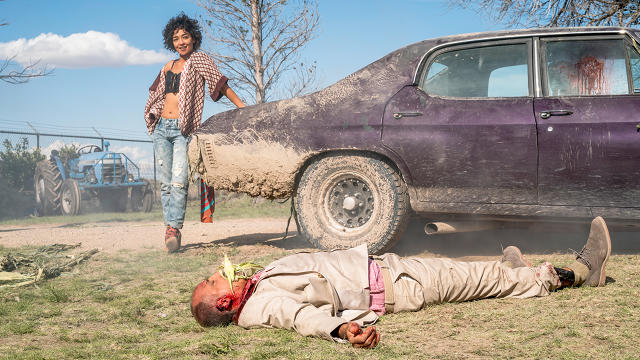
Slow It All Down
Preacher is one of the best-loved series in comics history. It was released at a time when the long-form prospects of comic book storytelling were being explored in full for the first time—Preacher is among the first extended, but finite, series ever told by a single writer/artist team. (Sandman, also from publisher Vertigo, worked in a similar fashion, albeit with an ever-shifting array of artists.) The series is breathtaking and groundbreaking—but it’s not perfect, and Catlin, Rogen, and Goldberg were empowered by Ennis to make it their own. For AMC’s Preacher, that meant slowing things way down.
“Once you figure out how you can actually produce it on an eight-day schedule, then it’s fun, because you have all these great characters, and you have all these great genres and tones, and all of these wonderful things that Garth [Ennis] gives us, and there’s so much story,” Catlin says from a hotel conference room an hour after the very first public screening of the Preacher pilot at SXSW. “It’s just—how do you pace it out? Because if you were to do a shot-for-shot of the comics, it would be like $300 million, you know what I mean? Once we figured out we could sort of do it this way, then it was just exciting.”
Preacher is a road story—both in the comics and, Catlin insists, on television—but it doesn’t play that way in the first four episodes. That makes sense for a first season of a TV show, where budgets are limited and locations are expensive, but it’s also something that, from a storytelling perspective, makes sense to Catlin.
“We haven’t let the road story go, but we’re sort of delaying it—let’s just put it that way. At its core, it is a quest, it is a road show, so we’ll get there. But it turned out to be a benefit, and hopefully the fans agree,” Catlin explains. “We really like the idea of seeing him as a preacher initially, and introducing this crazy, crazy world into a very small world of a very typical small West Texas town. I think it’s actually helped us, because it’s grounded it in the familiar—the mayor and the sheriff and the preacher whose heart’s not really in it and all that stuff—so all the crazy stuff about heaven and angels and vampires and violence hopefully doesn’t overwhelm, because it keeps giving the viewer a sort of grounded place to return to. It’s almost like a deep-sea diving. If we were to just jump right into the Preacher world, you’d probably get the bends as a viewer, but we’re sort of calibrating the show. The pilot is crazy, but it just gets crazier and crazier and crazier, and hopefully we do it in a way that doesn’t give people toxic shock.”
Viewers who come to Preacher on television expecting to find the story they’re familiar with told in the same way they’re used to are going to find changes. Jesse Custer’s time in the West Texas town where he served as a man of the cloth occupied only a handful of pages in the comic book, but the initial episodes of the TV show all take place there. Characters we meet later on in the comic book appear very early on in television—the disturbed slaughterhouse mogul Odin Quincannon, who doesn’t show up in the comics until nearly 50 issues in, fleshes out Preacher‘s supporting cast (with a perfect performance by Jackie Earle Haley) in the first handful of episodes, for example. And Ennis, who enters the conference room a few minutes later, explains that all of that is just fine with him.
“A lot of adaptation to pacing. If you tried to pace the show like the comic, you would overload it instantly. You have to give this story space to breathe,” Ennis says. “A previous attempt was at a screenplay for a movie, so a sizable chunk of Preacher crammed into two and a half hours—and it didn’t work. It was frantic. You know, lunacy on every page, a new freakshow character in every scene, and there was no breathing space, there was no quiet moment in the entire thing, so I love what they’ve done. I really do. I think they’ve nailed the pace for it just right. Instead of Jesse instantly getting his power and the instruction manual that goes with it, I love that he gets it and doesn’t even know he’s got it and then starts exercising it without meaning to, so obviously he’s going to have to go on a little voyage of discovery to avoid doing even more damage.”
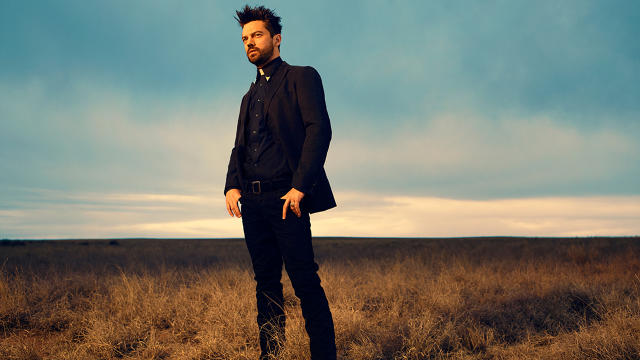
Go On A Voyage Of Discovery
Actors always gush about the roles they’re given, no matter the project. There’s somebody who plays Orc #2 in Warcraft II who will tell you how they really connect to the journey of their character and feel like they’re in the role they were born to play. But the Preacher cast was downright giddy when told they were on their way to Texas. But as exciting as the prospect was, these characters also come with some baggage that’s unique to a project like Preacher. Namely: For as thrilling as characters like Jesse, Tulip, and Cassidy are to play, it’s daunting to take on a character that fans have invested so many years into.
“At the moment, they’re a fan of the comic and we hope they can be fans of us, because the idea of letting these fuckers down, dude, it is unbearable,” Gilgun says. “It means the world to them, and the idea of fucking that up, man, is terrifying. Of course it is. I’ll be honest, I was more nervous of messing it up for the fans than I was of messing it up for Evan, Seth, and Sam. We all know what it is to be passionate and love something. The last thing you want is a bunch of English and Irish dickheads fucking it up. But we are hoping that we don’t do those things.”

How To Not Fuck It Up
Seth Rogen and Evan Goldberg aren’t English or Irish, but they know exactly how fans feel about the idea that some dickheads could walk into Hollywood with their favorite comic and turn it into something that loses everything that makes it special. The two—who’ve been best friends since childhood—discovered Preacher as a comic book in high school. Rogen would hang out in comic book stores in L.A. recommending the title to people who came in (“I was unemployed for years and years,” he says), and once Superbad gave the duo some pull in Hollywood, Preacher immediately became their dream project. “Ever since we had any clout in any way, shape, or form—not that we ever had that much ever, because it took a fucking decade, basically—but we tried to get it turned into something,” Rogen says. “We wanted to be the ones who translated it in some way.”
That was important to them mostly because, as superfans, they were afraid that if somebody else eventually made Preacher, they’d be the ones to screw it up. And most important to Rogen and Goldberg—who made their names on genre-bending comedies like Pineapple Express and This Is the End—was making sure that the show captured not just the depth and tension of the comic book, but also the fact that it’s funny as hell.
“Everyone’s instinct is to remove that, it seems,” Goldberg says. “They think that’s what people love: ‘Oh, it’s dark . . . ‘ What they love is that it’s everything. That it’s dark, it’s funny, it’s scary, it’s action, it’s love. We needed to keep the fun and the humor.”
Rogen and Goldberg’s Preacher isn’t a comedy. (“It would suck if we made it a full-blown comedy,” Rogen says.) And he stresses that, while humor “isn’t the most prevalent, as we were putting the show together, it was one of the most challenging things to maintain.” That’s something that they felt like they could bring to the project that the laundry list of filmmakers who’ve been attached to the project throughout the years might have missed.
“What we thought maybe we could contribute, that all these brilliant people who were attached to it in some way, shape, or form—people who by all means are much more talented than we are—but the one thing a lot of them were missing was this sense of fun and madness and mayhem into the show, which is something that I think we over the years have been pretty good at,” Rogen says. “That, I think, was the thing that spoke to us so much, and was the thing we personally felt like we could do that other people maybe wouldn’t be able to do as well.”
Preacher is funny, both in comic-book form and on AMC. The jokes are in the dialogue, in the situations, and in other places, too—sometimes it’s just expert comedic timing, or sometimes there’s a throwaway gag in the background involving a cast member from Top Gun that’s laugh-out-loud funny. And all of that matters, because for Preacher to work on TV, there have to be jokes that play to the format that the show exists in—comedic timing is a very different thing on the page than on the screen, after all.
Translating from comic book to screen is a challenge, but they also have what Goldberg describes as “the ultimate ace card.” Ennis didn’t just come to the premiere to hang out and do press as part of a free trip to Texas during SXSW—he reviews every single script. In fact, he’s the first person to read every one. “And not because he has the right to,” Goldberg says. “Just because he’s faster than us. When he gets a script, he’ll respond in, like, four hours with notes. When he thinks we’re wrong, he tells us—and it hasn’t been much, but he lets it be known, and it’s very helpful.”
Goldberg and Rogen are the show’s creators, but they aren’t working in the writers room. So one of the thrills of working on Preacher for them is seeing how those elements of Ennis’s penchant for madness that attracted them to the story in the first place somehow find their way into the scripts.
“I’m amazed at what the writers have done, because as I read the scripts and the outlines and go hang out and watch them break the new stories, I’m amazed at how much stuff that I did not think would be able to be incorporated they’ve managed to, and it’s incredibly encouraging,” Rogen says. “Sometimes we come in and just see a card that says one thing from the comic, and you’re like, ‘Oh, they figured out a way to do that.’ We feel a lot of responsibility to the fans, but at the same time, I think we are kind of asking people to trust us. It is not going to unfurl in the way that the comic unfurls, but hopefully when all is said and done, you will feel like we did Preacher.”
“Battle Pope” To “The Walking Dead”: Here’s Robert Kirkman’s Strategy For Creative Success
Fast Company , Read Full Story
(45)

